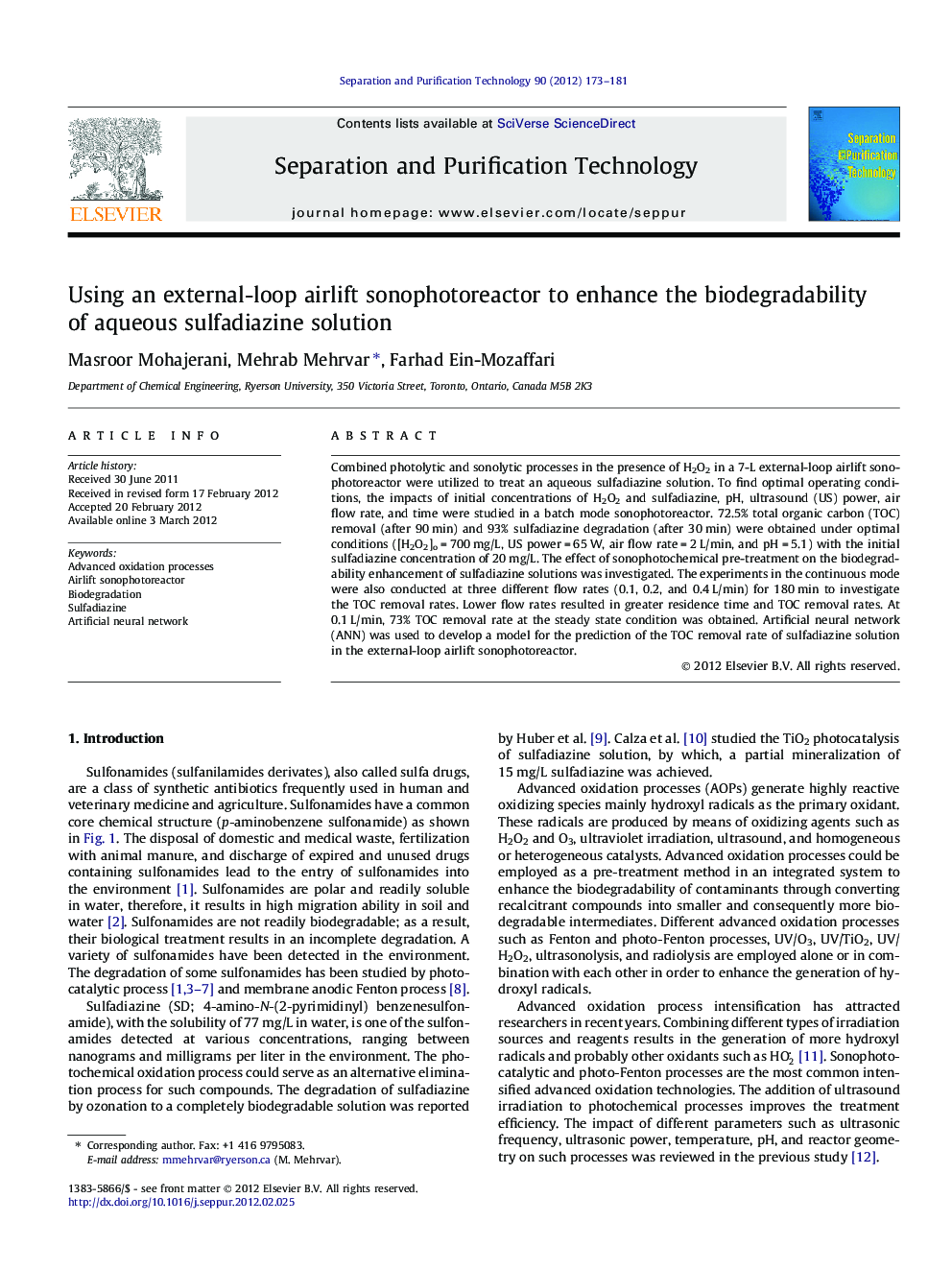| Article ID | Journal | Published Year | Pages | File Type |
|---|---|---|---|---|
| 642095 | Separation and Purification Technology | 2012 | 9 Pages |
Combined photolytic and sonolytic processes in the presence of H2O2 in a 7-L external-loop airlift sonophotoreactor were utilized to treat an aqueous sulfadiazine solution. To find optimal operating conditions, the impacts of initial concentrations of H2O2 and sulfadiazine, pH, ultrasound (US) power, air flow rate, and time were studied in a batch mode sonophotoreactor. 72.5% total organic carbon (TOC) removal (after 90 min) and 93% sulfadiazine degradation (after 30 min) were obtained under optimal conditions ([H2O2]o = 700 mg/L, US power = 65 W, air flow rate = 2 L/min, and pH = 5.1) with the initial sulfadiazine concentration of 20 mg/L. The effect of sonophotochemical pre-treatment on the biodegradability enhancement of sulfadiazine solutions was investigated. The experiments in the continuous mode were also conducted at three different flow rates (0.1, 0.2, and 0.4 L/min) for 180 min to investigate the TOC removal rates. Lower flow rates resulted in greater residence time and TOC removal rates. At 0.1 L/min, 73% TOC removal rate at the steady state condition was obtained. Artificial neural network (ANN) was used to develop a model for the prediction of the TOC removal rate of sulfadiazine solution in the external-loop airlift sonophotoreactor.
► Combined photolysis and sonolysis were employed in an external-loop airlift sonophotoreactor. ► Sulfadiazine degradation and TOC removal were studied under different processes. ► The initial concentration of H2O2 had significant effect on the degradation of sulfadiazine. ► The pre-treated solution in 60 min by US/UV/H2O2 enhanced the biodegradability of sulfadiazine. ► 72.5% degradation and 93% mineralization were obtained under combined batch processes.
